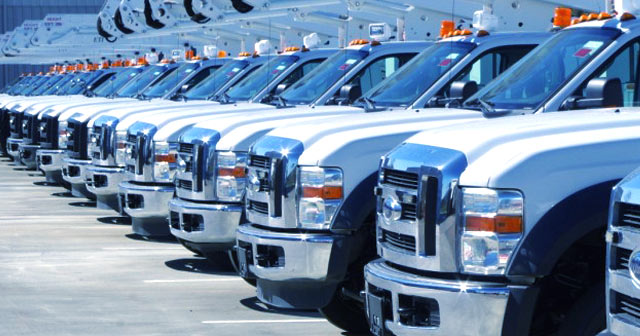-

Sales

-

Sales

Menu
Lets Meet
If you would like to come here the first time we do business to meet with us, please feel free to do so. We will pick you up at the airport and take you through the process of what we do for our clients. We feel confident that you will put us to work for you.
Call: (714) 765-7387
Domestic Sales
Step 1: What kind of car do you need? If you examine your needs rather than wants, you will quickly discover what the right car is for you. Take a moment to think about what is the primary use of your car. How many people do you need to transport? What kind of driving do you most often do? How long is your commute? Is it important that your next vehicle get good gas mileage? In too many cases people choose a car because it has an eye-catching style or it is a trendy favorite. If you go in this direction, you may either break your budget or have to go car shopping again soon. Let your needs, not your wants, drive your decision. Here are a few other questions to keep in mind when you begin your car-buying process: • Do you want a manual or automatic transmission? • Do you really need four-wheel drive? • Or all-wheel drive? • What safety features do you want? • Do you require a lot of cargo-carrying capacity? • Will you be doing any towing? • Will the car easily fit in your garage or parking area?
Step 2: How much can you afford? Regardless of whether you decide to buy or lease your next car, establishing a realistic monthly payment that will fit into your budget is a crucial first step. How much should this be? A rule of thumb is your total monthly car payments, whether you own one car or more than one, shouldn’t exceed 20 percent of your monthly take-home pay.
Step 3: Should you lease or buy your next car? A lease requires little or no money up front and offers lower monthly payments. But when the lease ends you are left without a car and a need to replace it. Buying a car is more expensive initially and the monthly payments are higher. But at the end of the loan, you will own a car you can still drive or sell. Other key factors that differentiate leasing and buying include: Advantages of Leasing
- You can drive a better car for less money
- You can drive a new car every few years
- No trade-in hassles at the end of the lease
Advantages of Buying
- When interest rates are low, it makes more financial sense to own a car rather than lease it
- No mileage penalty
- Increased flexibility, you can sell the car whenever you want
Step 4: Have you considered all vehicles in that class? Today’s new car (and truck) market is filled with great products. Most shoppers have difficulty keeping up with all of the vehicles manufacturers introduce and the changes they are making to their older vehicles, so it’s important to do your research. If you already have a car you are considering, this will be your starting point. Find the specific car you want on our Research page. Once you have chosen your specific car, you will be on a Vehicle Detail page. This page has links to all the Car Pricing, Features, Reviews and Shopping options.
Step 5: Have you considered all of the costs of ownership? Here is an often overlooked fact of car ownership: one car might be cheaper to buy, but more expensive to own. Why? Even if two cars cost about the same to buy, one can depreciate at a different rate or cost significantly more to insure or maintain. Before you commit to one car, you should estimate the long-term ownership costs of the vehicle you are considering.
Step 6: How to test drive a car. The goal of a test drive is to experience, as closely as possible, the same type of driving conditions the car will be used for after purchase. If you commute, drive the car in both stop-and-go traffic and at freeway speeds. If you frequently drive into the mountains, try to find some steep grades to climb. Drive over bumps, take tight corners at aggressive (but not dangerous) speeds and test the brakes in a safe location, such as a deserted parking lot. Get in and out of the car several times and be sure to sit in the backseat, especially if you plan on carrying passengers. In short, ask yourself what it will be like to live with this car for a number of years. While you are evaluating the car, don’t be distracted by the salesperson’s pitch. Don’t drive with the radio on, you can evaluate that later. A new car is a big investment; make sure you spend enough time really looking at it. And then, consider one last thing: your intuition. If you are uneasy about this car, follow your instincts. A vehicle purchase decision is too important (and expensive) to undertake without total confidence.
Step 7: After the test drive. After the test drive, you should leave the car lot. Why? Because you will probably need to drive other types of cars at other dealerships. It’s a good idea to do all of your test driving in one morning or afternoon. Driving the cars back to back will help you uncover even minor differences, which will lead to a more educated purchase decision.
Step 8: Let’s make a deal! At this point you should have considered all the cars in the class that interest you. You should have a good idea what you can afford. You should know if you want to buy or lease your next car. You should have test driven your top choices. Now it’s time to narrow your choices down to one car and make a deal.
Vehicle Modifications
We have factory authorized modified vehicles, limousines and full-sized van limo / RV conversions, available for export. Our factory has been inspected and approved by quality control companies such as TUV Rhineland and the CQC Centre. If you are interested in livery vehicles, custom executive transportation or high personal vehicles, contact us.


© Created with by 8Theme. All Rights Reserved


